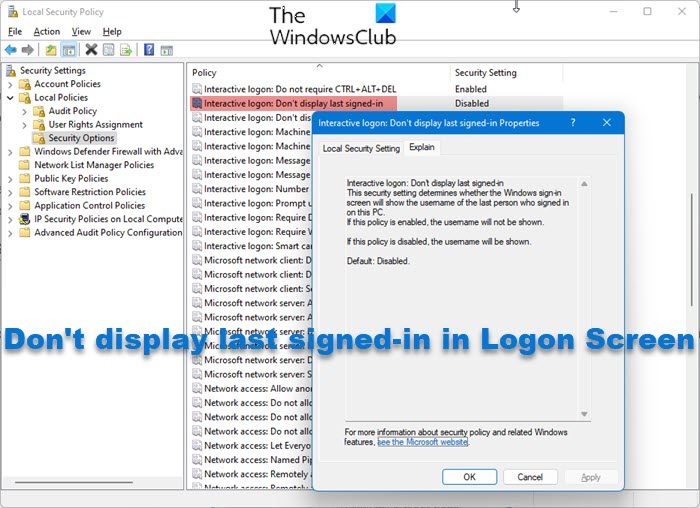You need to know that after Windows 10 version 1703, this Interactive logon: Do not display last user name policy setting is now renamed to Interactive logon: Don’t display last signed-in according to Microsoft documentation.
Don’t display last signed-in in Logon Screen in Windows 11/10
1] Using Group Policy
Type secpol.msc in Windows Start Search and hit Enter. This will open the Local Security Policy Editor. Navigate to Security Settings > Local Policies > Security Options. Now on the right-hand side, in Windows 11/10 look for Don’t display last signed-in in Logon Screen. In earlier Windows 10 versions you will see Interactive Logon: Do not display last username. Right-click on it and open its Properties. Set it to Enabled > Apply. TIP: This post will show you how to hide your email address in Windows Lock Screen, using Group Policy or Registry Editor.
However, secpol is basically just a GUI for the registry settings found in the registry at: Users of other versions of Windows may do the following. Open regedit and navigate to this key mentioned above. Right click > dontdisplaylastusername > Modify > Value Data > 1 > OK. This should do the job. Best to always create a System Restore point before working in the registry. Go here if you want to Change Ctrl+Alt+Delete options or Disable Secure Logon Ctrl Alt Del in Windows 11/10.

